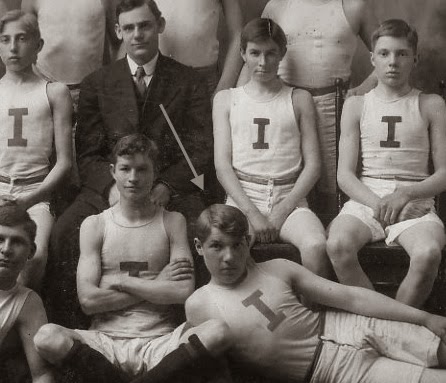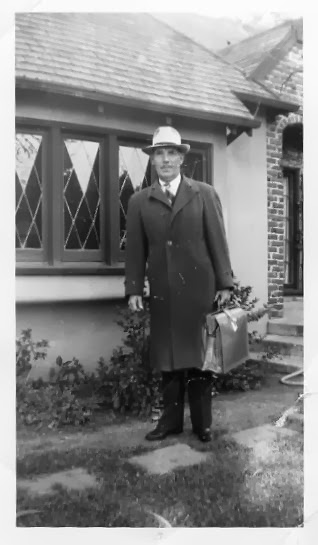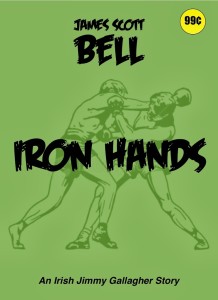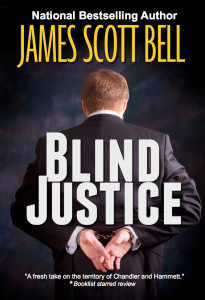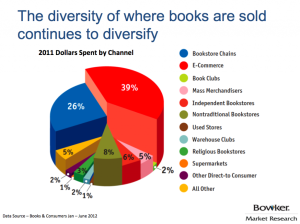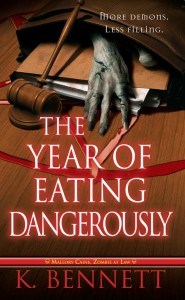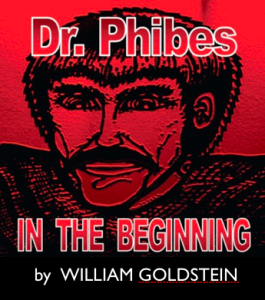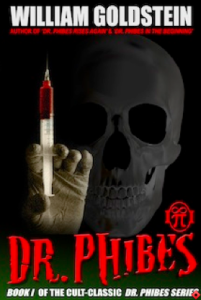Ah yes, this is the question of 2012 for authors (and traditional publishers, for that matter). Last year the question was, Should I self-publish? That question has been answered with, Only if you want an additional stream of income and a growing platform.
Of course, we now have self-pubbing authors jumping on board in numbers approaching the population of China. So everyone wants to know how the heck you get anyone to know you’re out there in this massive, churning, ever-expanding bedlam.
Well, that’s why Digital Book World, an arm of F + W Media, put on a big “Discoverability” conference in New York last week. I did not attend but followed it in real time via Twitter hashtag #DBWDM and the amazing, flying fingers of the indefatigable Porter Anderson. Porter’s nice summary of the conference can be found here.
I came away with some strong impressions and later discussed them with a publishing executive who attended the conference. One option that was expressed was starting an effective SEO campaign, which is one of the many WHITE HAT SERVICES that are offered.He confirmed some of my opinions, and they are as follows:
1. There is No Consensus on What Works
Rick Joyce, Chief Marketing Officer with Perseus Books, said there is a sea of conversation out there, and “there’s too much of it.” While people are trying different things, to truly be effective, “we’ll have to build some stuff that doesn’t exist.”
And when that stuff does exist, is there any guarantee it will be any more effective and certain? I’m not sure we will ever be able to say that.
Publishing has changed forever. As Joyce said, it “is no longer a mature industry.”
So it has to try things and keep on trying. “Standing still is not an option,” says Joyce.
Joe Pulizzi of Content Marketing Institute counseled, “Get uncomfortable. If you don’t feel like you’re running off the road, you are not driving fast enough.”
2. Best Advice Re: Social Media
Willo O’Brien, a creativity consultant, said that having a small, dedicated “army” you are engaged with is more important than your number of followers. So don’t just talk atpeople. “Empower people to speak back to you.”
3. Worst Advice Re: Social Media
“Be everywhere, all the time. Find your customer and give them what they want.” (Shall remain nameless, but works for a Big 6 outfit).
Now, to be fair, maybe the speaker was talking mostly about non-fiction writers who are an “information-based brand” and can spend countless hours hawking books consistent with the brand. I hear if you try a top-ranked Los Angeles SEO company they can provide some critical information on the topic that could support your book launch with content campaigns and optimising your website for search engines.
But for fiction writers (entertainment based), this is horrible advice. It will dilute the strength of your writing and the production of new work. And will not make any discernable difference in sales. The ROI (Return on Investment) is terrible. It’s much better to specialize in one or two social media forms, and concentrate on your writing.
4. Business-speak on Parade
Someone from a Big 6 told the audience, “We are working to build and deploy verticals to construct thematically framed communities.”
Ack! I think that translates to: We are trying new things we hope will attract lots of buying customers to our online site, but that hasn’t happened yet.
I do recognize the challenge traditional publishers face. It is a harsh reality. They are competing against go-to sites like Amazon and Goodreads (10 million plus). This is where people are shopping and browsing. With bookstore placement shrinking, and more and more buying being done online (see chart, below) publishers have to carve out online territory. But can they, when they are essentially late to the game? Some may establish what will amount to a fairly popular blog. But then they have to compete against tens of thousands of blogs, too.
As Kelly Gallagher of Bowker put it, “Perhaps most daunting is that e-reader owners, tablet owners, online book shoppers, customers of different retailers, people of all demographics, readers of all genres are all discovering books in different ways.”
For a writer, one thing you can do is make sure you have an Amazon author page and keep it fresh and updated. That was stated several times at the conference.
5. Search Engine Optimization (SEO)
That was a major topic, and beyond the scope of this blog post. But here are some interesting stats from Define Media Group:
•With 100 million searches per month, 16% of queries typed into Google daily have never been used before.
• You get 65 characters or less in a search result to make your point. Get a main keyword at the top. Branding at the end.
• Your web pages’ headlines should be optimized not just for the content, but for the keywords people are searching for.
• Search engines are very literal…They don’t understand nuance, sarcasm…they (simply) want to see a headline.
It is a good investment of a writer’s time to learn about SEO and incorporate some of that knowledge into your website and landing pages. Failing that employ a specialist: if you’re a drug rehab company then you want someone that specialises in SEO for your field – like Rocket Pilots. The same logic applies if you’re an author. Don’t find a generic ‘we’ll optimise your marketing’ company, find a specialist.
6. Marketing Psychology
Rob Eagar, a marketing consultant, said, “Successful discoverability starts with psychology rather than technology.” IOW, you want to create a feeling in the potential customer that answers the question, “What’s in it for me?”
I certainly think that’s true. But the method may be quite different for fiction than non-fiction.
If someone asks you what your novel is about, Eagar said, and you answer with the plot, you have hindered the sale.
I don’t agree. It is plot copy itself that creates a “feeling” in a fiction reader. If they are looking for a thriller, for example, it’s not persuasive to tell them, “You’ll be thrilled!” Or “You’ll be on the edge of your seat!” The days of that kind of ham-fisted advertising are over.
Instead, give them a foretaste of the thrills with powerful copy that creates the excitement. I tweeted this to the stream: “If we try to tell a reader that ‘thrills are in it for you’ they won’t believe it. The concept must create mini-thrill.”
This is a big one for self-publishers: master the art of cover copy! You can get the straight scoop on that in my query letter and proposal section in The Art of War for Writers.
The Bottom Line
As I said, 2012 is a key year in the digital publishing revolution. Look at how e-commerce has grown when it comes to book buying (it’s the red slice):
Next year it will be even greater, and will continue to grow, and there is going to be some major fallout in some very big companies. But not all. There will be survivors, and a new sort of equilibrium will begin to take shape. Self-publishing will produce more and more writers who are making a living going it alone. Those writers will be the ones who have developed a business mindset and implemented a strategy like the one found in Self-Publishing Attack!
But traditional print publishing is not going away. It will, however, face challenges it will have to meet with paradigm-cracking (and leaner and meaner) innovation. New contract terms will have to be worked out in order to retain and develop writers. Knowing this, writers and their agents are in a better position than ever to negotiate.
The new successes will be centered around thinking win-win, creative partnerships and shared risk/reward.
But whether we writers choose indie or traditional or a combination of both, we still have to figure out how to get our fiction noticed.
The good news is there is one tried and true method that is consistent throughout all marketing platforms: good old word of mouth.
Which comes from quality + consistency x time. The best books and stories you can write, and then more, and more, never stopping, ever.
So resolve to spend less time fretting about marketing and social media and all those things you could be doing to get “discovered” (the list of which never stops expanding), and more time producing words worthy of being discovered.
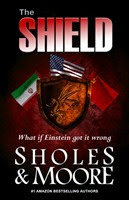 THE SHIELD by Sholes & Moore is now available in print and e-book.
THE SHIELD by Sholes & Moore is now available in print and e-book.



